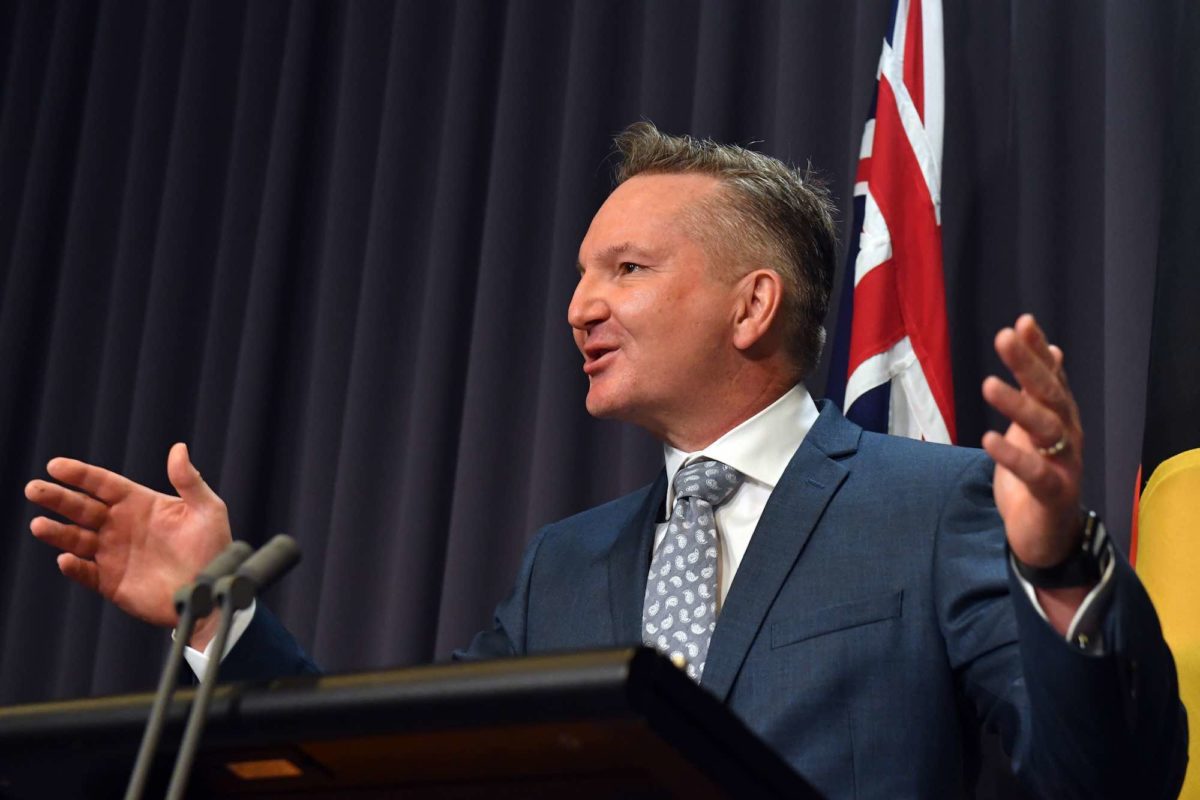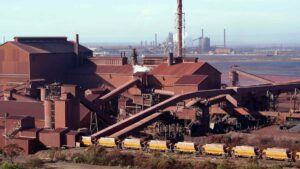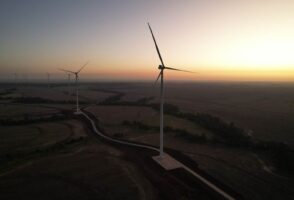State and federal energy ministers have agreed to put emissions into the objectives of the National Electricity Market, in a landmark move that is expected to smooth the way for Australia’s rapid transition from a coal dominated grid to renewables.
The lack of an environmental objective had hamstrung regulatory decisions, investments and rule making since it was dropped from the rules of the newly created market in the late 1990s. Its approval – flagged exclusively by RenewEconomy last week – was one of a number of key decisions made by ministers at a meeting in Canberra on Friday.
“This might not sound much but this is the first change to the national energy objectives in 15 years,” federal climate and energy minister Chris Bowen told reporters after the meeting.
“Australia is open for business. Australia isa determined to reduce emissions and we welcome investment to achieve it.”
It’s not before time. A new analysis from Ndevr shows Australia is not on track to meet Labor’s newly legislated 43 per cent reduction target, thanks mostly to the energy consumed in preparing coal and gas ready for export. It comes as a new report highlights runaway warming in the Arctic, at four times the rate of the rest of the planet.
The state and federal ministers also appear to have taken heed of the near unanimous rejection of the Energy Security Board’s proposed capacity mechanism, and admitted it will not be ready by the end of this year, as previously planned.
They said in their communique that they will take “more active control” of the work that had previously been handed to the ESB under former minister Angus Taylor. They said this will this “ensure firming capacity is in place as the system evolves, and the best means to manage the risks of disorderly exit of coal generation.”
It means the decision on capacity mechanisms will be taken by ministers, but the ESB has been relegated to a role of “advice”, along with other officials. That is an important step that will be welcomed by most in the market.
The ESB proposal was rejected – not because it was thought a capacity mechanism is not needed (although there are major disagreements on that point) – but because of its structure, which sought to include coal into a market incentive that should be designed to attract new technologies.
The ministerial communique appears to accept the advice of the industry, and will look to split the two issues – coal closures and new technologies.
“Ministers thanked the Energy Security Board for the detailed work undertaken and agreed market bodies will collaborate with, and contribute to the work of Senior Officials and the ESB under the leadership of Ministers,” the said.
“Ministers intend to take a more active role in delivering the firming capacity needed as the system transforms and consider the best means to manage the risks of a disorderly exit of coal generation.”
They also appear to have reserved their decision on another critical matter for the industry, congestion management, after the industry reacted angrily to the ESB’s proposals on this matter too.
“Ministers, noting the critical importance of providing more certainty for investment in renewable energy on the east coast, asked the Energy Security Board to expedite work on a congestion management mechanism as much as possible, and for a detailed update on this work at the next Energy Ministers meeting.”
Bowen told journalists after the meeting the ministers still wanted a capacity mechanism to be introduced as quickly as possible, but clearly needed more time to consider their options and any revised proposals.
“The plans we inherited had it happening in 2025. It can happen more quickly, that’s great, but we’ve got a very big push,” Bowen said. “We need a capacity and firming mechanism to ensure that the transition is orderly.”
Bowen had been warned of the pitfalls of the ESB proposal. See: Chris Bowen needs flexibility to avoid capacity market trap set by fossil fuel lobby and the industry rejected the proposals almost unanimously: “Makes little sense:” ESB’s capacity market farce leaves projects in a financial hole
There was no indication if there was any discussion on proposals for shorter term measures such as an energy storage target, designed on the lines of the successful renewable energy target.
The ministers also agreed to give the Australian Energy Market Operator increased powers to manage and intervene in the gas market, in an effort to avoid a repeat of the crisis that gripped energy markets this winter.
They have also agreed to adopt a new “National Energy Transformation Partnership” that will seek to identify and declare and accelerate transmission works of national significance (including the actionable projects in the Integrated System Plan – Marinus, VNI West (via Kerang), and Humelink).
It will also look at regional planning scenarios, workforce, supply chain and community needs, and a first nations clean energy strategy, and to recognise the role of electricity networks and demand side participation will play in delivering the energy transformation.
The inclusion of an environmental objective into the NEO was welcomed by climate and energy experts, and by ACT energy minister Shane Rattenbury, who worked on the proposal with Queensland minister Mick de Brenni.
“We need to act quickly if we are to have any chance of meeting Australia’s net zero emissions by 2050 target. The previous Federal Government delayed this necessary work for ten years, wasting precious time,” Rattenbury said in a statement.
De Brenni said prioritising inclusion of emissions reduction goals in the National Energy Objectives has also gained the support of Queensland’s key energy stakeholders.
“Many of these stakeholders have been seeking this change for years but it’s been blocked by successive federal Morrison, Turnbull & Abbott LNP governments,” he said in a statement.
“In fact, the original National Objectives go back even further to the Howard government, which resisted the inclusion of emissions in the first instance.
“It’s a clear and direct signal to the entire nation as well as the global community that everyone is now working together in this new energy era.”
The Climate Council’s Andrew Stock said the lack of an emissions objective in the NEO had allowed industry and regulators to ignore the impacts of electricity sector greenhouse gas emissions, enabling investment in polluting technologies like coal and gas, which have driven up emissions as well as electricity prices.
“This legislation paves the way for low cost, low emissions energy sources — renewable energy like wind and solar — to play a greater role in Australia’s energy system,” Stock said.
“Now, all states and territories must ensure this legislation gets passed. Climate science makes clear efforts by the fossil fuel industry to block initiatives like this are way out of time.”
Tim Buckley, senior energy market analyst and director of Climate Energy Finance, said that in the absence of the obvious best solution – a price on carbon – the change to the NEO would provide a simple and unambiguous objective, aligned with Australia’s new climate ambitions, that maximises domestic energy security.
“The destination is now clear – a decarbonised, stable and low-cost energy system built firmed renewable energy that resolves and avoids the recurring energy crisis evident today,” Buckley said.
more to come.










